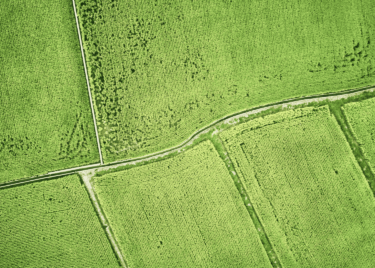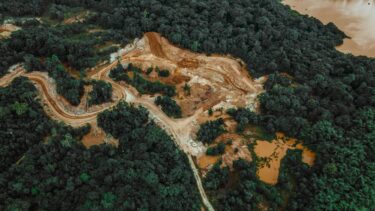
David Attenborough’s “Extinction: The Facts” highlighted the unsustainable relationship between our consumption and production and the destruction of nature. Similarly, the World Economic Forum report on “The Future of Nature and Business”, published on 14 July 2020, warned that the earth’s ecosystems are “fast approaching the cusp of irreversible tipping points with far-reaching effects on the economy, society and life as we know it.” The paper argues that our businesses must become ‘Nature Positive’. This means bringing nature into the core of business decision making, to have an overall positive impact on biodiversity.
In today’s complex, globally sprawling supply chains, this presents a substantial challenge for businesses.
What is Biodiversity?
Biodiversity is a term for all the different kinds of life that occur in a given area. It refers to the variety of animals, plants, fungi, and even microorganisms like bacteria that make up the natural world.
Each of these species and organisms work together in interactive systems, or ecosystems. In turn, ecosystems support life and provide a wide range of benefits to people and society, called ecosystem services, such as food, clean water, medicine, and shelter.
Why is biodiversity important?
Increasingly, ecosystems are being viewed as part of our natural capital. This is a term from economics that describes the stock of renewable and non-renewable natural resources (e.g. plants, animals, air, water, soils, minerals) that combine to provide ecosystem services. These services provide the basis for the functioning economies and societies. On a deeper level, biodiversity is also an important aspect of culture, identity and spirituality.
Businesses relationship with nature
Whilst businesses are often critically dependent on nature and the services it provides, they can also directly or inadvertently drive the destruction of nature globally through their supply chains. For example, a restaurant chain depends on nature in its supply chain for pollination of crops and clean water for agriculture. However, the application of harmful pesticides in the production of these crops can harm pollinators and reduce water quality.
Identifying business impacts and dependencies on biodiversity offers significant commercial opportunities, as well as the opportunity to help stem and reverse nature loss. By highlighting the commercial benefits of a Nature Positive approach, the significant influence of businesses can be re-directed to benefit nature instead of driving its destruction.
Some examples of the opportunities available to business include:
- Supply chain continuity, predictability, resilience and associated benefits including improved operational performance and reduced costs in the short- and medium-term
- The long-term viability of business models that depend on ecosystem services, e.g. through supply chain continuity
- Improved access to capital from public and private equity and debt, as well as improved relationships with insurers
- Access to new markets, products and services that rely on a biodiversity-positive approach
- Increased market share through enhanced performance and reputation
There are some clear first steps that businesses can take to improve their biodiversity impacts, such as sourcing locally and organically where possible, minimising water use, and even considering which financial services providers they use. This is important and will help businesses, but a more in-depth biodiversity strategy that is suited to the complexity of contemporary supply chains is needed, particularly for larger organisations.
Our approach to biodiversity in supply chains
Our approach to addressing biodiversity in supply chains focusses on three core elements.
Developing a biodiversity strategy
Business impacts and dependencies on nature are wide-ranging, complex, and need to be managed in the long term. For these reasons, developing a biodiversity strategy is essential to creating a Nature Positive approach. When developing a biodiversity strategy, the Natural Capital Protocol and its forthcoming biodiversity supplement are key frameworks to refer to. This might be done as part of a wider natural capital or sustainable sourcing strategy and should cover the following:
- Governance and oversight arrangements
- A strategic goal or vision (e.g. net zero deforestation or net positive biodiversity impact)
- An assessment of biodiversity impacts and dependencies
- An assessment of business risks and opportunities arising from those impacts and dependencies
- Key metrics & targets you will use to monitor progress against your goals
- Details of the implementation options you will use/ are using to achieve your goals
Most businesses will initially choose to focus on understanding their biodiversity impacts, and there is a range of tools available to help you to understand and model the high-level risks and impacts in supply chains. These include Bioscope and the Global Biodiversity Score, which can be used to understand the impact of various sourcing scenarios.
Biodiversity Data Management
The next step is to find out what is going on in your supply chain. Data is central to successfully implementing your biodiversity strategy, and this is particularly true of supply chains where activities are often interrelated, but not necessarily transparent. Various software systems can help you to improve the visibility of your suppliers and their biodiversity and wider environmental performance.
Several of these also provide a platform for you to engage your suppliers via mediums including online forums, discussion boards and questionnaire surveys to address key questions such as: Who is in my supply chain and what are they doing regarding biodiversity and sustainability issues including human rights, climate change, & waste management?
Where it is possible to trace raw materials to a specific farm or extraction site, there are opportunities to collect empirical environmental data using software systems such as the Cool Farm Tool and its biodiversity data module. These systems are used by some of the world’s biggest producers and consumers in the food and beverage sector to monitor, manage and report on activity in their supply chains. They have increasing significance in parts of the world, such as the EU and UK where environmental data can underpin payments for ecosystem services.
Implementing your biodiversity strategy
To become Nature Positive, companies need to take action. This should follow the impact mitigation hierarchy, which states that businesses should take action to:
- Avoid biodiversity impacts from the outset
- Minimise those impacts that do occur
- Restore or rehabilitate degraded ecosystems
- Offset their biodiversity impact where possible
In practice, this might include making decisions to source/ not source from certain suppliers or regions, working with suppliers to achieve certification for certain parts of the supply chain, identifying where unsustainable materials might make it into the supply chain (including using new technologies such as blockchain and DNA markers), or providing education on sustainable sourcing to your suppliers. You may also need to explore the potential for deeper interventions to restore and offset impacts in your supply chain.
We are the world’s leading purpose driven, digitally enabled, science-based activator. And always welcome inquiries and partnerships to drive positive change together.




